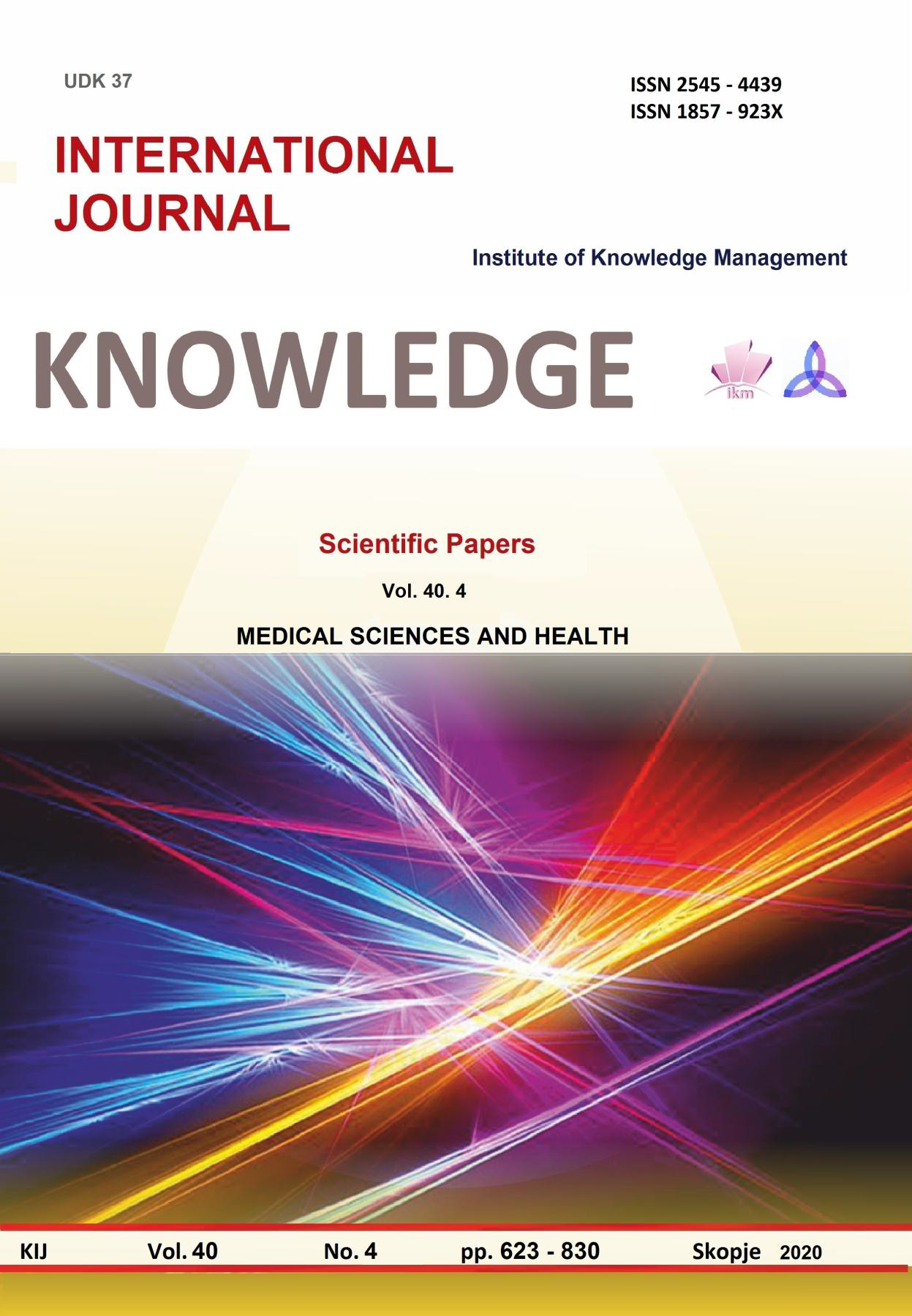PROSTHETIC TREATMENT OF PATIENT AFTER MAXILLARY RESECTION BY CLOSED DEFINITIVE OBTURATOR
PROSTHETIC TREATMENT OF PATIENT AFTER MAXILLARY RESECTION BY CLOSED DEFINITIVE OBTURATOR
Author(s): Ivan Gerdzhikov, Rosen TsolovSubject(s): Social Sciences
Published by: Scientific Institute of Management and Knowledge
Keywords: maxillary resection; maxillary defect; obturator; post resection denture.
Summary/Abstract: Introduction:Hard palate resection causes significant disturbances in function as nutrition, speech and fluid intake. The problems after maxillary resection are often exacerbated by concomitant radiotherapy, and leads to dry mouth, difficulty swallowing and impaired speech intelligibility. This is the reason for seriously destroyed patients live capacity. Prosthetic treatment methods take main role in rehabilitation of patients with maxillary resection. The most commonly used is the three stages treatment with surgical, temporary and definitive obturator. The success of prosthetic treatment in patients with maxillary resection depends on many factors. The main factors are the size of the defect and presence of preserved teeth. Aim:The main goal of this clinical research is to investigate the treatment development in one clinical case for demonstration of closed obturator prosthetic treatment effectiveness and role for restoration of the functional damages in oral cavity. Materials and methods: Patient 56 years old suffered from maxillary carcinoma, has been under the prosthetic treatment. Maxillary resection has been made in ride side of the patient hard palate. Size and defect location required closed obturator application. The first step has been defect gauze tamponade. Next step involved impression in alginate. What is followed: master cast has been filled using silicon material in the defect area in depth approximately of 7 mm under the anatomical palate shape. Finally, closed definitive obturator has been prepared with wire clasp retained on second upper left molar. Acrylics clasp also has been applied and retainedon the upper right canine.Results: Application of closed obturator in described clinical case has been very good clinical decision allowing us to achieve successful sealing. Because of small defect size and its favorable location masticatory function andspeech has been immediately restored. Closed shape of the replacement part has been provided definitive obturator retention and stabilizationConclusion:The prosthetic treatment of patients with hard palate resection provides the ability of normal feeding, speaking and swallowing. Prosthetic treatment by closed definitive obturator allows good defect sealing. In this way treatment helps and supported successful damage functions restoration. So that, we recommended this kind of treatment in cases of small defects on hard palate area.
Journal: Knowledge - International Journal
- Issue Year: 40/2020
- Issue No: 4
- Page Range: 701 - 704
- Page Count: 4
- Language: English

